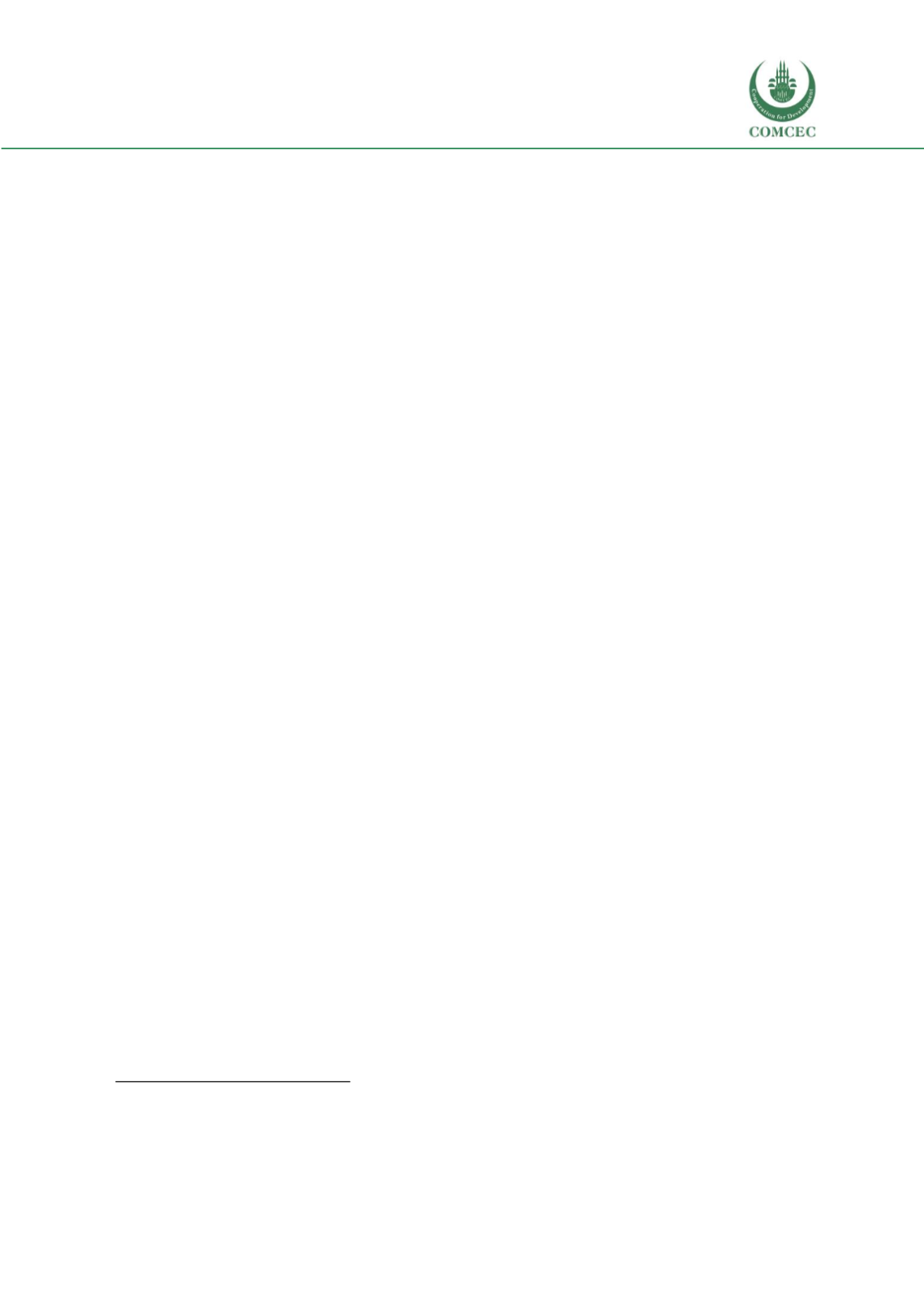

Education of Disadvantaged Children in OIC:
The Key to Escape from Poverty
77
children (e.g. in the South-East, for reading - only 5.5% of tested children had one manual per
child, 94.5% had to share manuals with other children – fewer than one manual per child) (See
Figure 30). This shows a correlation between lack of material and low performance. It may be a
consequence of the low share of capital expenditure in the education budget (see section 3.3.)
which leads to poor school infrastructures and availability of materials (see WB (2010) SDI
report).
Private formal schools
perform better than public schools as seen in the PASEC findings. The
differential is so large that it points to the low quality of education in the public sector. The low
quality is likely to be perceived by the parents who will in turn believe the returns to sending their
children to school are too low. The ones who can afford the private schools will choose those
establishment and with little parental and community involvement in the management of public
school, there is likely to be too little pressure to improve the quality and hold schools accountable.
Challenges, Barriers and Bottlenecks
Barriers to Access
Beyond classic determinants of access to school
Section 2.1 showed considerable disparities
in access to schooling according to regions, with 5 critical regions being Kaffrine, Kaolack,
Diourbel, Louga and Tambacounda. While poverty does play a role in these 5 regions, with
Kaffrine and Diourbel exhibiting high rates of poverty, Louga experiences low poverty rates.
Population density may have a role in low access rates since Tambacounda has a low population
density but Djourbel and Kaolack have high densities while still exhibiting low access to schooling.
The Southern regions of Ziguinchor and Kolda are poor but with the highest rates of access to
schooling, in spite of the security issues experienced over the years. The schooling situation in
these 5 critical regions cannot therefore be explained just by the classic determinants i.e. poverty,
density, security and so forth. This section will cover the demand-side, socio-cultural and
economic barriers that may explain the regional variations.
Demand side issues and parental attitudes
Nationalism.
It is important to note that those central 4
224
critical regions are also regions that
have the highest rate of Wolof speaking populations which may be misleading and point to
ethnic/language barriers in access to schooling (section 2.1). However, based on in-country
interviews, one important theory to explain the low access to formal schooling in those regions is
local politics. There is a strong nationalist and anti-colonialist politically active movement
particularly in Diourbel which rejects French-speaking formal schooling.
Religion
.
In addition, those populations are also more traditionally Muslim. As such, a very large
number of parents prefer to send their children to Arabic speaking schools or religious Muslim
224
The 5
th
region Tambacounda does not have a strong anti-colonialist political movement. The low access rates there reflect
the more classic issue of low density migrating populations coupled with low supply of schools.
















